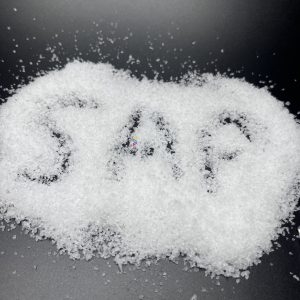Superabsorbent polymers (SAPs), commonly used in products like diapers and hygiene items, often refer to ポリアクリル酸ナトリウム. This substance is produced globally by major manufacturers through the polymerization of acrylic acid, neutralized with sodium to form a sodium salt.
The Polymerization Process
Polymerization is a key chemical process where individual molecules, called monomers, join to create long chains, forming a polymer. This process is essential in the production of various plastics and other materials.
For sodium polyacrylate, the base monomer is acrylic acid, the simplest unsaturated carboxylic acid made of carbon, hydrogen, and oxygen molecules. When acrylic acid molecules polymerize in the presence of sodium, they form the sodium polyacrylate polymer. Sodium, an element familiar from common table salt (sodium chloride), is crucial in this reaction.

Remarkable Properties of Sodium Polyacrylate
Sodium polyacrylate is known for its extraordinary ability to absorb and retain large amounts of water—up to hundreds of times its weight. Unlike sponges or fluff pulp that release water when squeezed, sodium polyacrylate retains the water even under pressure. This makes it invaluable in applications requiring high water retention. Additionally, SAPs are non-toxic, making them safe for consumer use.
Variants and Their Applications
Superabsorbent polymers can also be produced using potassium as the neutralizing agent, resulting in potassium polyacrylamide or potassium polyacrylate. These variants have similar absorbent properties to sodium polyacrylate but are especially useful in agriculture, where they help conserve water in soil, improving water efficiency and crop growth.
Manufacturing and Environmental Considerations
Producing SAPs involves complex chemical processes and significant energy use. However, advancements in manufacturing technology are improving the efficiency and sustainability of these processes. Researchers are also working on developing biodegradable SAPs to address environmental concerns associated with synthetic polymers.
将来の展望
The future of superabsorbent polymers is promising, with potential applications expanding beyond their current uses. Innovations in medical fields, environmental management, and materials science could utilize the unique properties of SAPs, leading to new solutions for water management, waste treatment, and more.
In summary, superabsorbent polymers like sodium polyacrylate are remarkable materials with exceptional water-absorbing capabilities. Their versatility and safety make them essential in various industries, and ongoing research continues to reveal new potentials for these extraordinary polymers.

